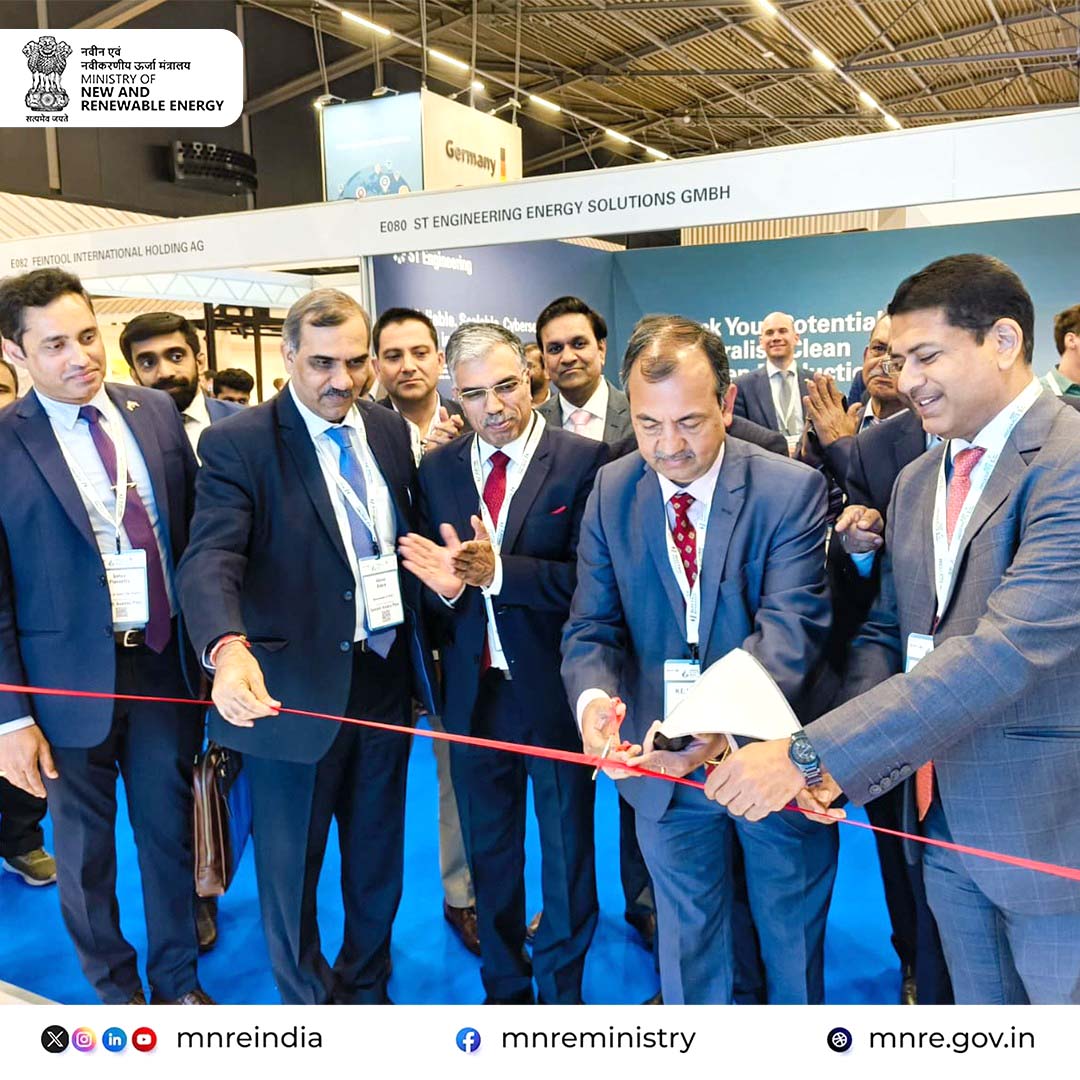The Ministry of New & Renewable Energy (MNRE), Government of India, actively participated in the World Hydrogen Summit 2025 at Rotterdam, Netherlands reaffirming India’s commitment to renewable energy and green hydrogen leadership. Shri Santosh Kumar Sarangi, Secretary, MNRE, addressed global stakeholders and highlighted India’s ambitious roadmap toward a sustainable, decarbonized energy future.
India’s Strategic Vision: Leading the Global Green Hydrogen Economy
During his keynote speech, Shri Sarangi emphasized India’s transformative potential to become a global leader in green hydrogen, leveraging its fast-growing renewable energy sector. He pointed out that India has already installed over 223 GW of renewable energy capacity, including:
- 108 GW from solar energy
- 51 GW from wind energy
This places India among the world’s fastest-growing renewable energy markets.
National Green Hydrogen Mission: A Blueprint for Energy Transition
Launched in 2023, the National Green Hydrogen Mission is the cornerstone of India’s strategy to transition towards clean energy. With an initial budget of USD 2.4 billion, the mission sets ambitious targets:
- Production of 5 million metric tonnes (MMT) of green hydrogen annually by 2030
- Reduction of 50 MMT of CO₂ emissions every year
- Generation of over 600,000 green jobs
- Attracting investments worth USD 100 billion
- Creating demand across key sectors and incentivizing domestic production capacity
Accelerated Implementation and Policy Support:
India has made substantial progress in implementing its green hydrogen goals:
- Allocated 862,000 TPA of hydrogen production capacity to 19 companies
- Awarded 3,000 MW of annual electrolyzer manufacturing capacity to 15 companies
- Launched pilot projects in steel, mobility, and shipping sectors
To streamline development:
- A Green Hydrogen Certification Scheme has been introduced
- Environmental clearance exemptions have been granted for Green Hydrogen and Green Ammonia plants
- Three major ports – Kandla, Paradip, and Tuticorin – are being developed as green hydrogen export hubs
- 15 Indian states have announced supportive policies for the green hydrogen sector
These coordinated efforts reflect a Whole-of-Government approach to building a strong, self-sustaining green hydrogen ecosystem.
Global Collaboration and Future Outlook:
Despite rapid strides, the Secretary acknowledged that challenges remain high production costs, infrastructure gaps, and lack of standardization need to be addressed to scale India’s hydrogen economy. He invited global delegates to visit the India Pavilion at the Summit to interact with Indian companies and explore collaboration opportunities.
Reiterating India’s global ambition, Shri Sarangi concluded that India aims not only to fulfill domestic green hydrogen demand but also to emerge as a leading exporter of green hydrogen by 2030, playing a key role in global decarbonization efforts.


